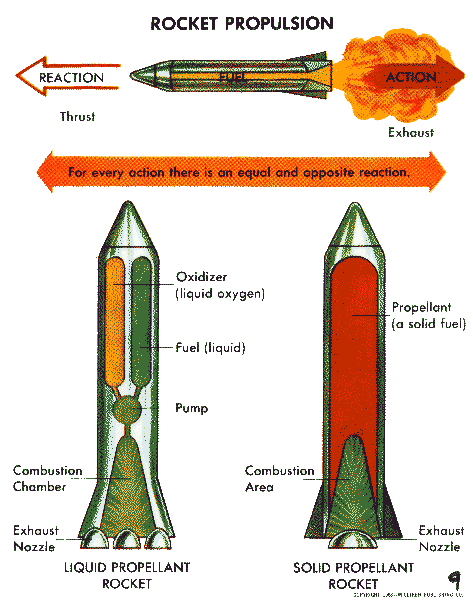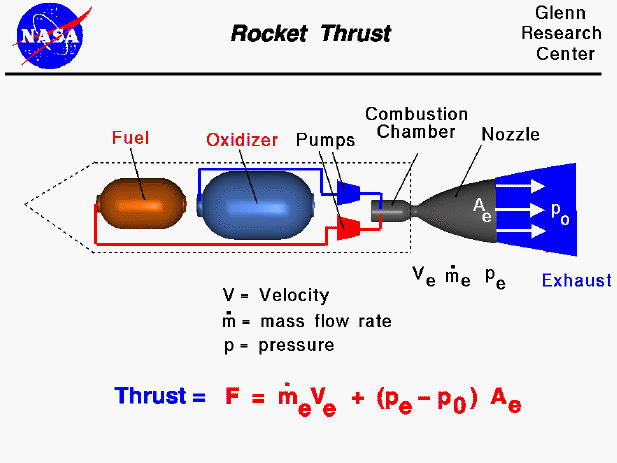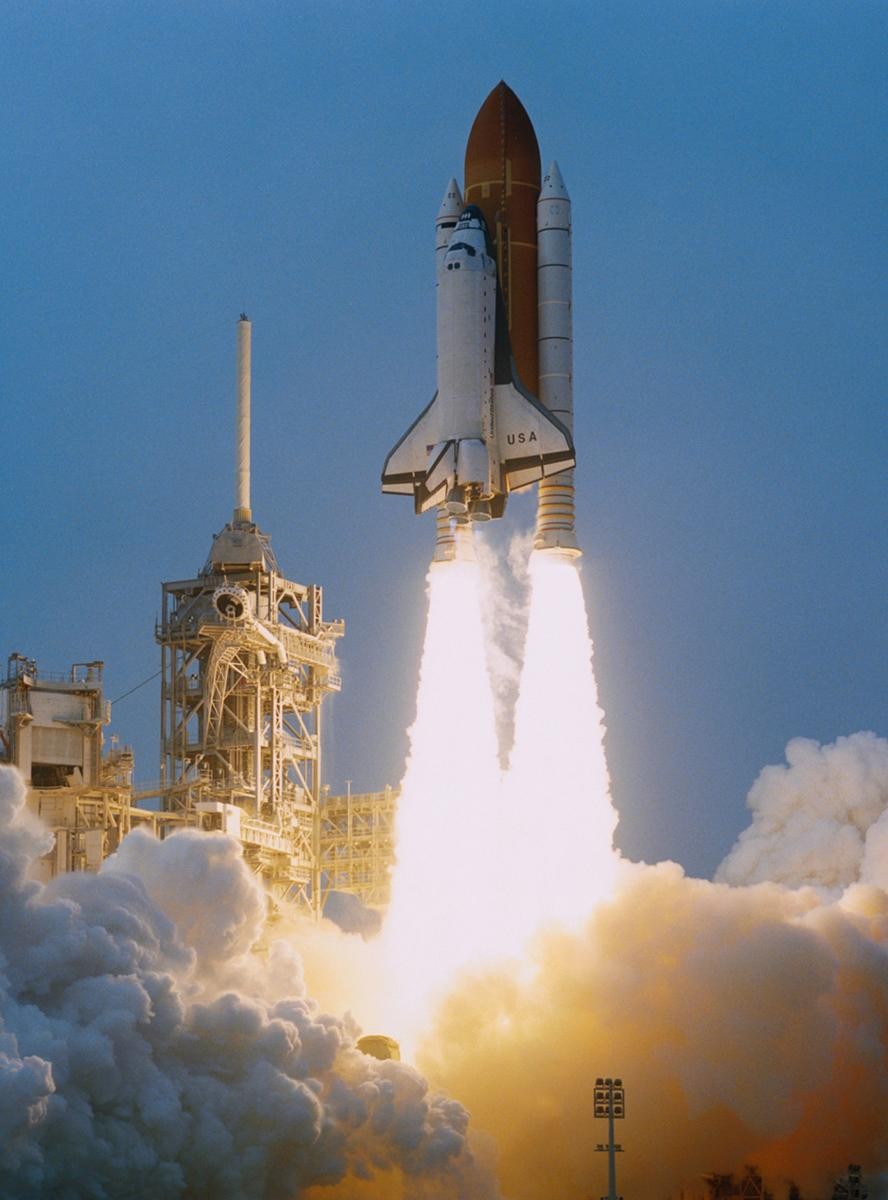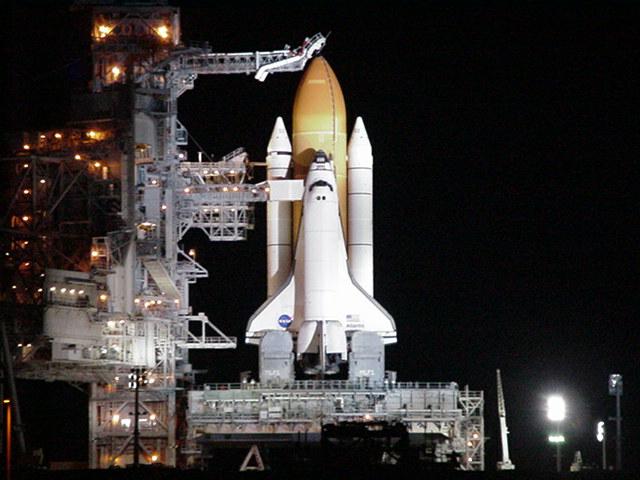BASICS OF ROCKETS
A rocket moves in accordance with Newton's third law of motion.

www.uaf.edu/asgp/ space/prop.html
Most rockets produce a thrust of burning gases from the combustion of chemical propellants (solid or liquid forms) which are ejected from the rocket through the exhaust nozzle. The rocket moves forward due to the opposed reaction from the exhaust blast, not the exhaust itself. The greater the speed of the blast, the greater the reaction is against the rocket, which in turn produces a greater overall velocity. The exhaust produces a force against the air, thus propelling it forward. Since the exhaust blast does not require anything to push against, the rocket can operate with greater efficiency in space.

www.lerc.nasa.gov/WWW/K-12/airplane/rockth.html
Chemical propellants come in two forms, solid and liquid. The solid-propellant systems are usually referred to as motors and the liquid-propellant systems are called engines. Determining what propellants to use is based on the particular application for its use, cost consideration and safety aspects.
Solid-propellant motors have faster reaction times but are limited, after construction, to only minor adjustments to the rate of thrust and cannot be reignited after shutdown.
Liquid-propellant engines produce greater thrust per unit mass. They can be easily stopped, restarted, and adjusted during flight. Most liquid-propellant rockets are very hazardous, difficult to store, and are difficult to use safely.

http://engineering.newport.ac.uk/StaffPer/StaffEngPer/DevansPer/Front-Page.html
United States space shuttles use both systems. Liquid-propellant in the three main engines and solid-propellant in the two lateral rocket boosters.

http://uss001.infi.net/flatoday/floridatoday/space/explore/manspace/shuttle/sts101/pre/042400e.jpg
